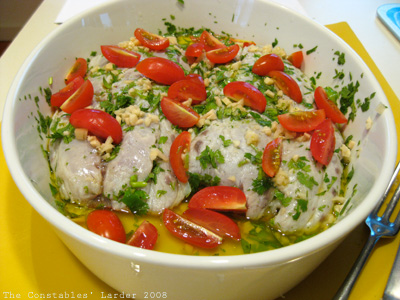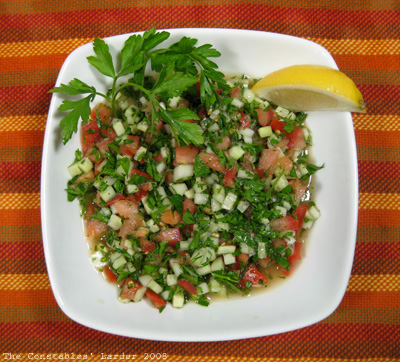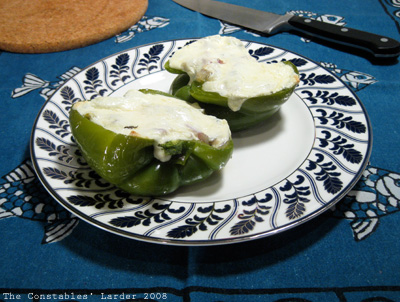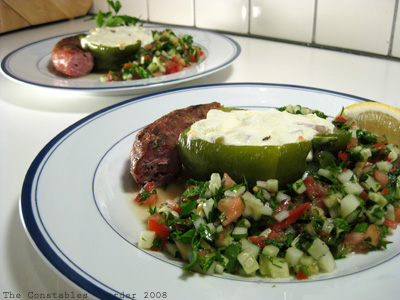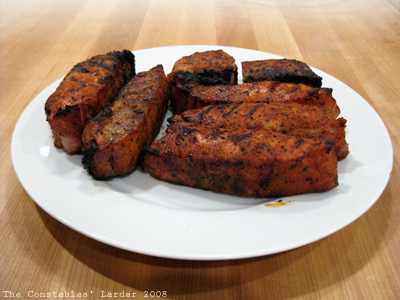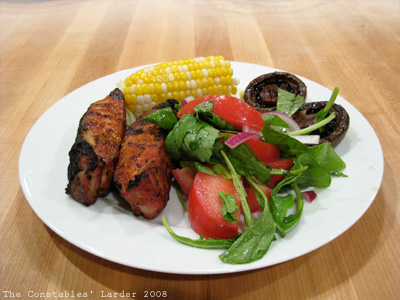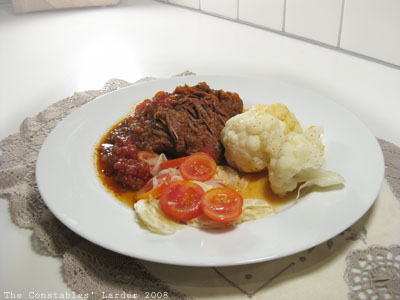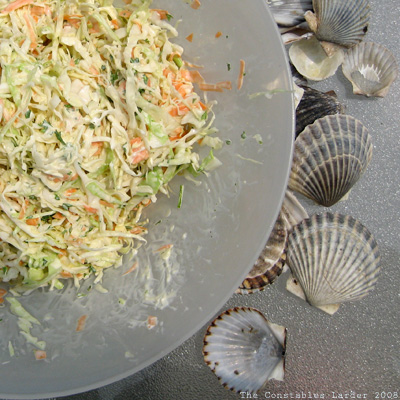
Summer picnics often mean cole slaw, but I’ll come right out and say that I hate most American cole slaw, primarily because of the insistence on making it sweet, not to mention the overload of mayonnaise. Bleaghh! (now you get to guess what sound I am intending when I wrote that word)
In my mind, a great cole slaw is a simple one. I inherited this simple recipe from my parents, and I’ve never run across a superior recipe. This is exactly what we made for a family 4th of July gathering yesterday:
1 green cabbage
4 lemons
2-3 carrots (or 1 really big one)
big handful of parsley
salt & pepper
Mayonnaise (Ed. I typically just use Hellmann’s, although my understanding from Lisl is that Aussie’s definition of mayo is a bit different so I’m not sure what a good off-the-shelf equivalent would be outside of the US)
With a long chef’s knife (8″ or longer), shred the cabbage as thin as you can (don’t be afraid to chop it up a little more if you feel your shredding job is a bit too chunky). Place in a large bowl. Peel your carrots, discarding the outside peelings, and then using the peeler, cut long, thin strips of carrot turning the carrot in your hand as you go so you are working all around the carrot’s circumference. Depending on the carrot, you may want to discard the woody inside core. I usually then quickly chop up the peelings a bit so that no piece is longer than an inch or two. Add the carrot to the bowl, as well as finely chopped parsely.
Squeeze the juice of 4 lemons into the bowl (can always increase or decrease number of lemons to taste). Halve or quarter the lemons and then squeeze into your free hand, keeping your fingers close enough together that you can catch and discard any lemon pits. Add a light amount of salt and pepper.
Estimating the amount of mayo is a “feel” thing that depends on how much you love mayo. I tend to err on the lighter side, but for a full cabbage this still ends of being between 4 and 6 big tablespoons. The key is to mix and taste as you go (like salt, you can’t really pull it *out* of the dish once in). You can also add more salt and pepper to your taste in this step.
The result is a fresh and tasty cole slaw that goes great with a barbecue meal (which is exactly what we did). I’ve also done this recipe with dill instead of parsely and liked the results.
For an interesting and different take on cole slaw, check out the Lime and Peanut recipe over at 101 Cookbooks.
P.S. the scallop shells in the picture have nothing to do with the dish, they just happened to be on the table as the girls had been collecting shells on the beach earlier.

